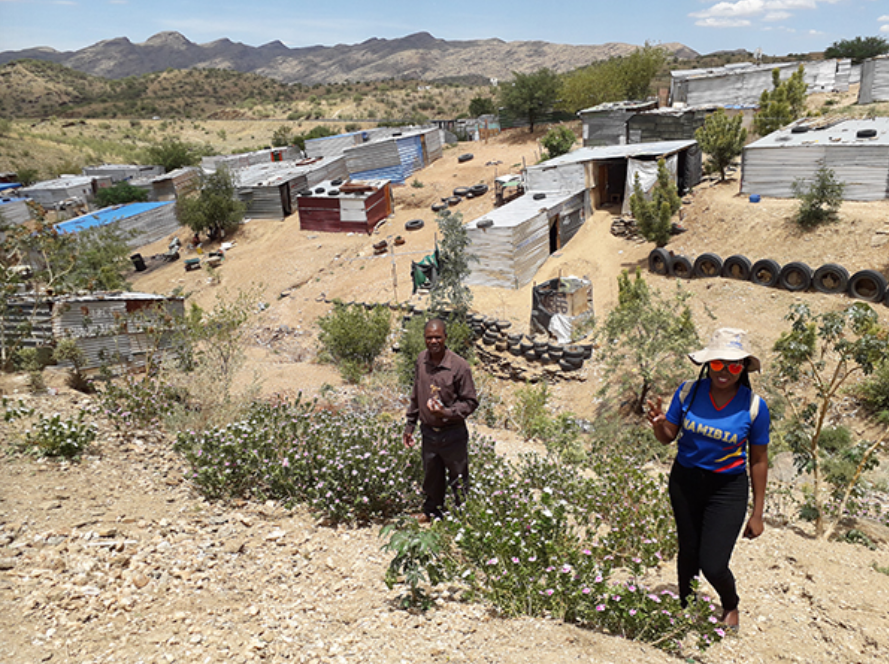GCRF Peri-Urban Resilient Ecosystems (PURE) Tool

Cities and climate change Annotation
This tool is part of the Urban Toolbox, a collection of tools aimed at supporting planning and decision-making for improving the health, well-being and resilience of city residents and urban systems more broadly.
This toolbox is being developed by the SEI Initiative on City Health and Wellbeing.
GO TO THE SEI URBAN TOOLBOX FOR LIVEABLE CITIES HOMEPAGE
About this tool?
The project’s principal focus concerned applying an innovative values-based scenario tool to develop urban policy informed by multiple stakeholder value systems (e.g., municipal authorities, urban planners, marginalized and informal communities). Stakeholder scenarios considered both historic and contemporary climate, land-use, and rural-urban migration patterns, while future scenarios considered how the City of Windhoek’s National Integrated Climate Change Strategy and Action Plan (ICCSAP) will perform under urban planning, conservation and governance scenarios.
How does this tool work?
By applying a participatory values-based scenario modelling approach that allows diverse stakeholders, including marginalised rural-urban communities, to articulate their perspectives concerning future urban policy planning processes, the project’s aim is to encourage the co-design of equitable future climate resilient urban development pathways, and serve as a future policy model for the country.
Who might use this tool?
PURE is an important tool for all actors, in particular policy makers, leading the decision-making process in urban planning.
Which stakeholders are involved?
Local actors and communities, including marginalised voices, should be included as key stakeholders to improve urban planning decision-making.
What stage of the process does this tool support?
This tool can be adapted to be used at different stages of an assessment:
- defining the assessment
- generating ideas
- developing solutions
- implementation
- monitoring
- evaluation
Tool overview
PURE supported the development of just and representative climate resilient urban strategies in dryland Windhoek, Namibia, with an aim to enhance future health, wellbeing and economic development.
The project’s principal focus concerned applying an innovative values-based scenario tool to develop urban policy informed by multiple stakeholder value systems (e.g., municipal authorities, urban planners, marginalized and informal communities). Stakeholder scenarios considered both historic and contemporary climate, land-use and rural-urban migration patterns.
Application: PURE case study examples
Using PURE to support integrated and inclusive climate change planning in Windhoek, Namibia: this case study details how a collaborative, integrated, and inclusive approach was used to create a climate change strategy and action plan.
Using PURE to support participatory planning in Freedom Square in Gobabis, Namibia: this case study demonstrates how using a participatory planning technique can support residents during a resettlement exercise.
Capabilities and resources required
As the PURE Tool aims to apply an innovative values-based scenario tool to develop urban policy informed by multiple stakeholder value systems (e.g., municipal authorities, urban planners, marginalized and informal communities), depending on the context and situation, different resources and capacities may be required.
Overall key capacity requirements include:
– knowledge capacities – to understand and apply the values-based scenario tool accurately and help capacity build others to participate and use the tool.
– community capacities – in some situations, community needs, requirements, and understanding will be required in order to effectively use the tool and support the relevant project.
– government/local authority capacities – in some situations, government and/or local authority capacity may be required to support the use of the tool and relevant project.
Implementation tips: key enablers and potential barriers
A good understanding of the PURE Tool and concept is required in order to conduct the approach and that those stakeholders involved are willing to participate and learn throughout the planning process.
Potential integration with other tools
The PURE Tool can be used alongside other tools and should be complementary. It operates along the lines of principles and thus should not conflict with other tools. For example, throughout the planning process the PURE Tool can be used alongside other tools such as the Social Tenure Domain Model as seen in the Using PURE to support participatory planning in Freedom Square in Gobabis, Namibia case study above.
(0) Comments
There is no content